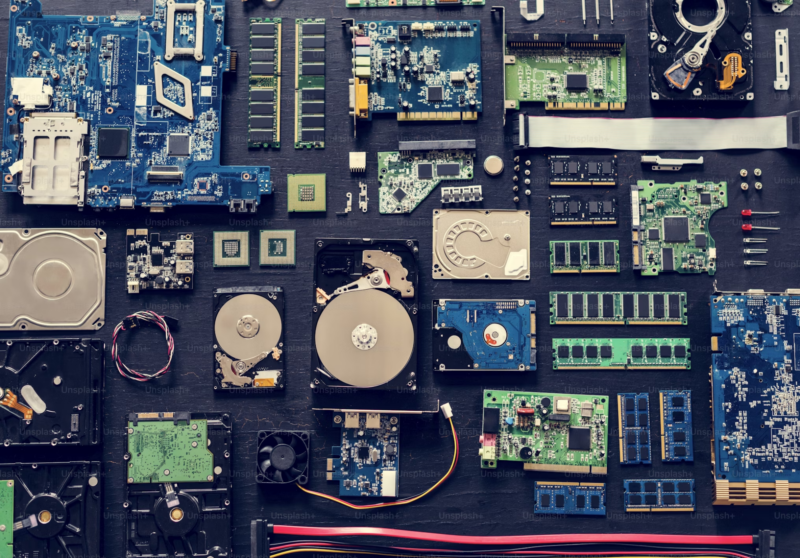Integrating new technologies into legacy systems has become a necessity for businesses striving to keep pace with innovation. As industries evolve, outdated systems often become bottlenecks, hindering growth and efficiency. Companies must adapt, blending the old with the new to stay competitive. However, this integration comes with its own set of challenges, from ensuring compatibility to minimizing downtime. Chas Bearse explores practical strategies and insights to make this transition seamless.
Understanding Legacy Systems
Legacy systems are like the old workhorses of the technological world. They’re dependable and often irreplaceable, yet they come with their own set of challenges. As organizations attempt to move forward with new technologies, it’s crucial to have a solid grasp of these aging systems.
Legacy systems often exhibit specific characteristics that make them challenging to manage. First, they sometimes have compatibility issues. These systems were designed with past technologies that may not easily connect with modern software.
Another feature of legacy systems is their reliance on outdated technologies. Companies face similar hurdles when maintaining technology that has outlived its initial popularity. The operational processes of these systems can also be unique. Every organization might have its own way of using technology.
One major reason why organizations persist in using these aged systems is cost. Expenses can skyrocket unexpectedly. It’s often cheaper to repair and maintain than to overhaul. Familiarity also plays a role. Employees who’ve used these systems for years may be comfortable with them. Moving to a new system would require time to learn and adapt, potentially disrupting everyday operations.
Lastly, the operation of legacy systems for many companies ensures that essential processes run smoothly. Even if the system is old, its importance to business operations cannot be underestimated.
Challenges of Integration
Integrating new technologies into old legacy systems can be daunting. Many hurdles must be overcome to successfully transform outdated systems with modern solutions.
One of the biggest challenges you’ll encounter involves technical limitations. Legacy systems often run on outdated software, which can be incompatible with newer technologies. Hardware limitations often come into play. Older machines may not support the demands or functionalities required by modern software. A lack of documentation makes it difficult to understand the original setup, making troubleshooting and integration an uphill battle. Without proper guides or blueprints, deciphering how things were intended to work is difficult.
Another significant barrier is cultural resistance. Employees and management might cling to traditional methods because they are familiar and comfortable. Change is often met with skepticism, and the idea of learning something new can be intimidating. It’s not unusual for people to worry about job security, fearing that new technologies might render their roles obsolete.
“Older systems often have vulnerabilities that can be exploited during the integration process,” says Chas Bearse. “Introducing new technologies can sometimes open additional avenues for security breaches.”
Incorporating robust security measures involves conducting thorough risk assessments and implementing up-to-date security protocols.

Strategies for Successful Integration
Before jumping into integration, taking a step back to assess the current systems is vital. Conducting a thorough assessment helps identify system strengths, weaknesses, and compatibility issues. With clear plans in place, it’s easier to anticipate potential hurdles and mitigate risks effectively.
Tackling integration in one giant leap might seem tempting, but adopting an incremental approach often proves more effective. By integrating new systems in small, manageable chunks, organizations can minimize disruption to daily operations.
Notes Bearse, “This gradual method allows for adjustments and fine-tuning along the way.”
Such an approach ensures that any unforeseen issues can be addressed promptly without causing major disturbances.
Bringing in new technologies isn’t just a technical change; it’s also a human one. Without adequate training, employees might feel overwhelmed or resistant to new systems. Change management helps ease this transition by addressing employee concerns and encouraging adaptability. When staff is prepared and ready for change, organizations lay the groundwork for a successful integration.
Case Studies and Real-World Examples
When integrating new technologies into legacy systems, real-world examples provide valuable insights into industry giants’ steps, challenges, and triumphs.
In the banking sector, JPMorgan Chase modernized core systems by integrating cloud technologies to enhance data analytics. This shift enabled real-time processing and personalized customer experiences. They fortified cybersecurity and adopted artificial intelligence to streamline customer interactions and back-end processes, reducing operational costs while improving service delivery.
Similarly, Walmart enhanced its supply chain by incorporating Internet of Things (IoT) devices and artificial intelligence, improving inventory management and customer experiences. These case studies highlight the importance of strategic planning when modernizing legacy systems. Learning from these examples gives organizations a chance to navigate their modernization journeys with confidence and precision.
Future Trends in Integration
As technology advances, businesses face the challenge of integrating modern innovations into existing legacy systems. Successfully navigating this landscape requires staying informed about emerging trends that influence integration strategies. Keeping an eye on these trends helps you stay ahead of the curve, ensuring your systems remain efficient and competitive.
The rapid development of artificial intelligence (AI), cloud computing, and the Internet of Things (IoT) is reshaping how businesses approach integration. AI offers intelligent solutions for managing and automating data processes, making system integration faster and more accurate. By predicting patterns and learning from data, AI helps streamline complex integrations.
Cloud computing is revolutionizing integration by providing scalable resources that transcend physical limitations. With the cloud, businesses can merge data from different sources without geographical restrictions. This flexibility enhances connectivity and collaboration among global teams.
The IoT connects devices like never before, opening new avenues for integration. Devices communicate with one another, sharing data in real time, which improves decision-making and operational efficiency. As IoT technology evolves, it becomes essential to integrate these devices seamlessly into legacy systems.
As technology progresses, integrating new systems also involves adhering to evolving regulations. Data privacy laws, such as the General Data Protection Regulation (GDPR) in Europe, demand stringent data handling and storage practices. Failure to comply can lead to significant penalties, making it crucial for businesses to align their integration strategies with these laws.
Regulatory bodies continuously update policies to address new tech developments. These updates often target cybersecurity measures, ensuring data integrity and protection. When integrating new technologies, it’s vital to stay informed about these regulations to avoid legal issues and maintain a strong reputation.
When the regulatory landscape is understood, organizations can develop integration strategies that enhance operations and safeguard their business from regulatory risks, according to Bearse.
Successfully integrating new technologies into legacy systems requires careful planning and execution. The journey involves understanding the unique needs of your existing infrastructure while aligning them with modern solutions.
Strategic integration not only enhances operational efficiency but also positions your business for sustainable growth. The task is complex but ignoring it may hinder progress and innovation. Evaluate your current systems, assess potential technologies, and devise a phased implementation plan.
Published by Stephanie M.






